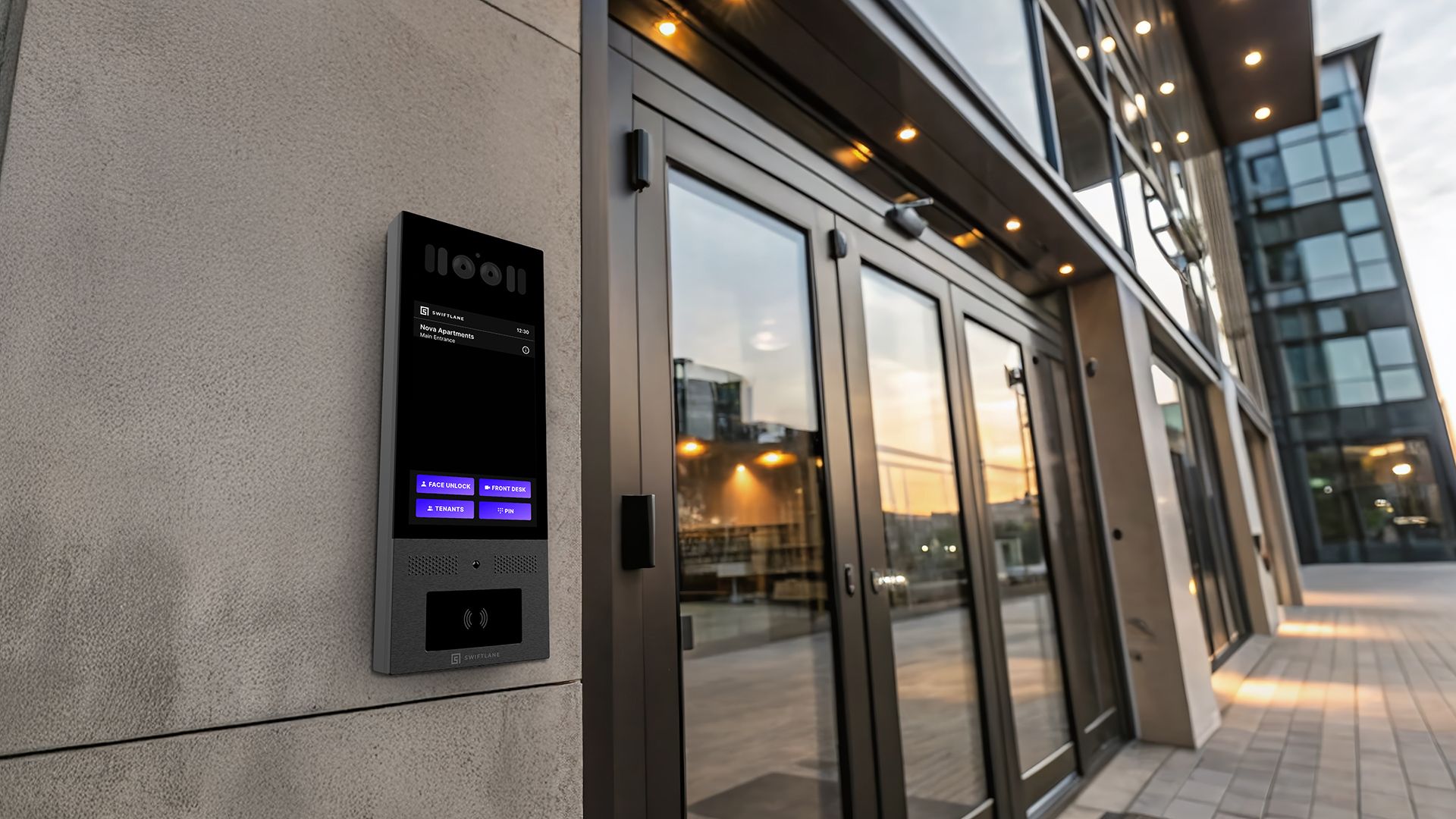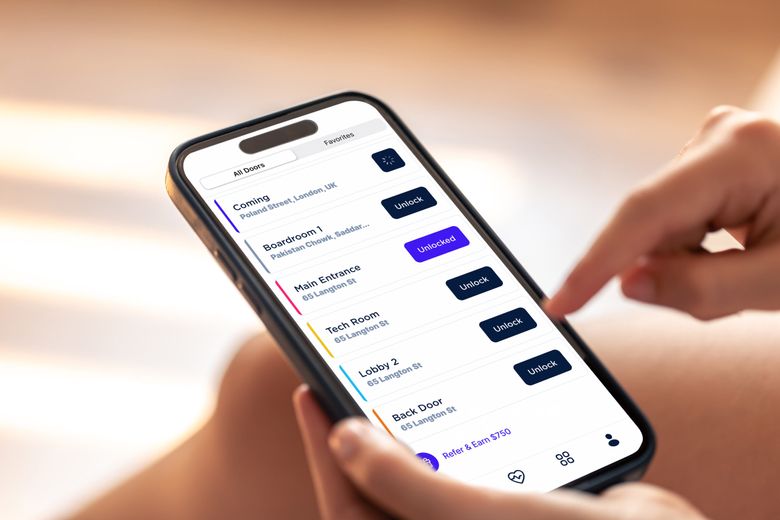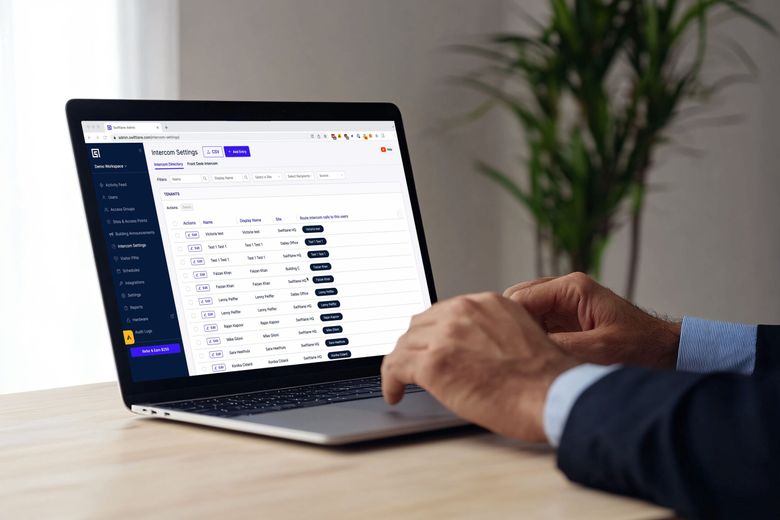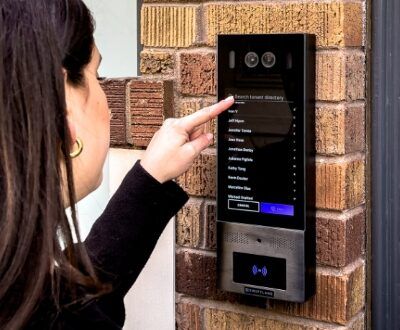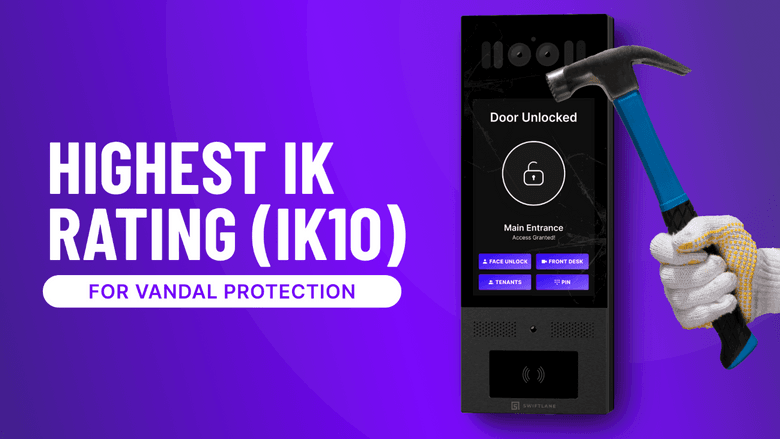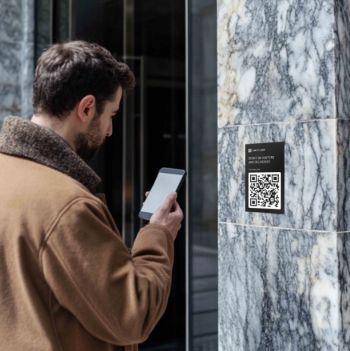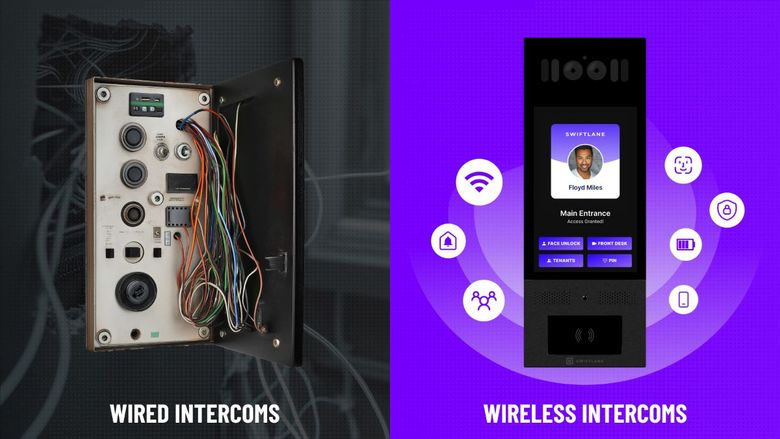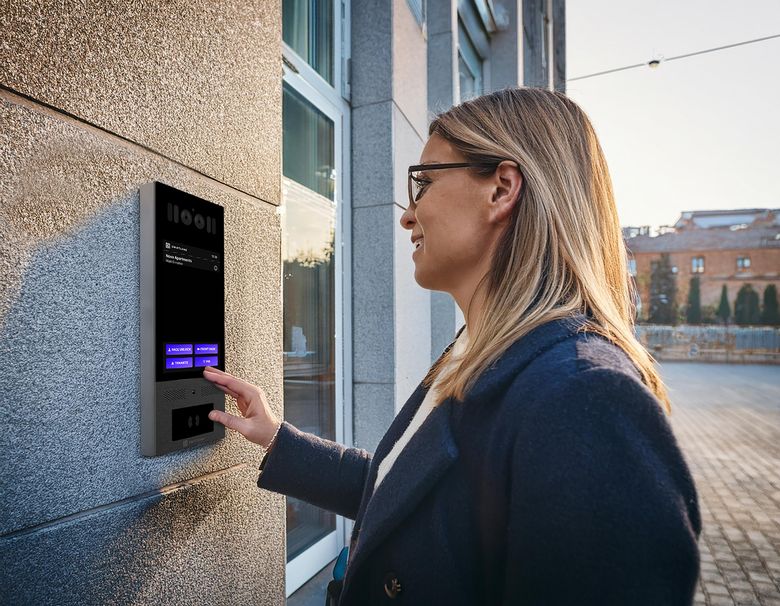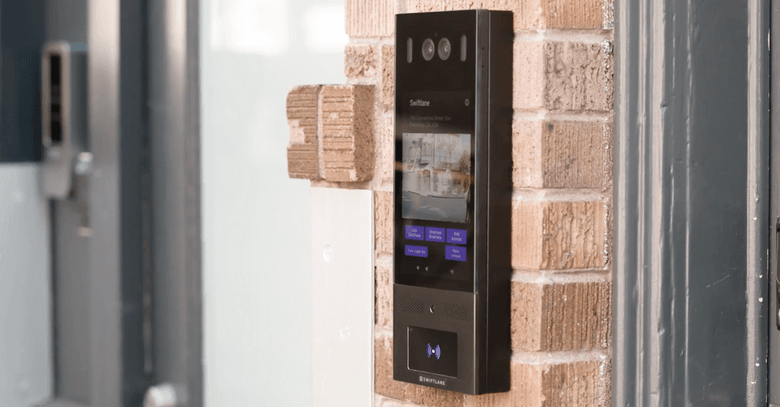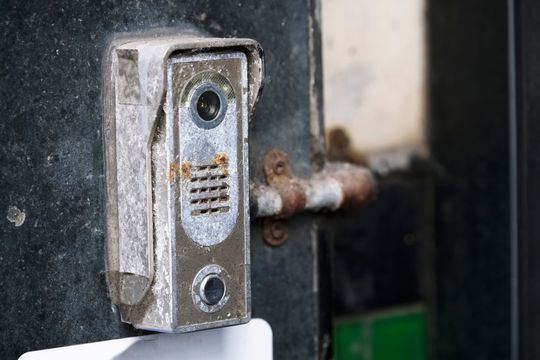Introduction to Commercial Video Door Entry Systems
The need for secure, efficient, and reliable access control has never been greater—especially in commercial spaces. Whether you’re managing an office, a multi-tenant building, a bustling retail center, or a manufacturing and warehouse facility, ensuring controlled access is critical to protecting your property, your people, and your assets. Enter commercial video door entry systems, modern solutions that blend security with convenience.
Today’s advanced commercial video intercom entry systems go beyond traditional intercoms, allowing you to see, hear, and communicate with visitors in real time—right at your fingertips. But with so many options on the market, how do you choose the perfect system for your business needs?
That’s where this guide comes in. Designed with commercial users in mind, we’ll walk you through everything you need to know about video door entry systems: their benefits, features, and how to select the right one for your specific needs. Along the way, we’ll answer your most pressing questions and help you navigate the purchasing process with confidence.
Table of Contents
- Introduction to Commercial Video Door Entry Systems
- What is a Video Entry System?
- Benefits of Video Door Entry Systems for Commercial Use
- Key Features to Consider in a Video Door Entry System
- Types of Video Door Entry Systems
- Steps to Assess Your Commercial Needs
- Best Commercial Video Door Entry Systems
- Installing a Commercial Video Intercom System
- Answers to FAQs About Commercial Video Door Entry Systems
- Learn More About Swiftlane’s Commercial Video Intercom
What is a Video Entry System?
A video door entry system, also known as a video intercom system, is a modern security solution that allows you to visually and audibly verify visitors before granting them access to your property. Unlike traditional intercoms that rely solely on audio, video systems provide a live camera feed, enabling you to see who’s at the door in real time.
With commercial video door entry systems, commercial tenants can:
- Verify that the person ringing is really who they say they are
- Deter theft from unauthorized entries, such as fake delivery people
- Screen potential customers at the door
- Limit entry to guests with a scheduled appointment
- Provide a convenient keyless entry method for tenants, office workers, or retail staff
Most video intercoms are paired with access control, such as remote electronic door release, so that authorized employees can remotely release the door. Meanwhile regular building tenants can use the video entry system in place of ordinary keys to enter the building or a designated office or retail space within it.
How Does a Door Intercom Work
Single-Unit Commercial Space: A guest presses a button on the intercom, which buzzes or rings a dedicated console inside the building or sends a notification to an employee’s mobile device. A staff member answers the call and sees a video of the person at the door. By pressing a button, the staff sends a signal to the door to release the electronic door lock, and the guest can enter.
Multi-Unit Commercial Space: Visitors select a particular commercial tenant from a list either printed next to the intercom, marked with individual buttons, or from a digital directory built into the intercom unit. The intercom buzzes or rings staff from that tenant, who answer the call on a dedicated console or their digital device. Staff can see who is at the door and press a button to unlock it remotely.
Building Staff and Tenants: Doors paired with a video intercom can still work with ordinary keys, but most video intercoms offer upgraded and convenient keyless forms of entry for your building staff and tenants. These include:
- PIN numbers typed on a keypad built into the intercom or part of its touchscreen
- Electronic credentials such as key fobs or RFID-enabled ID badges that are tapped at the intercom or a peripheral proximity reader
- Tapping their mobile device to a reader built into the intercom or using an app on their phone or smartwatch to unlock the door
- Biometric ID, such as facial recognition by looking at the intercom video camera
Benefits of Video Door Entry Systems for Commercial Use
Investing in a video door entry system can transform how businesses manage access and security. Here are the key benefits tailored to commercial applications:
Enhanced Security
Video door entry systems allow real-time monitoring, ensuring only authorized individuals gain access. The visual verification feature adds an extra layer of protection, reducing the risk of unauthorized entry. This can help deter theft of inventory and intellectual property.
Convenience and Remote Access
With modern systems, property managers and business owners can control access remotely via mobile apps or a push button panel inside the office or shop. With mobile apps, whether you’re on-site or off, you can unlock doors, grant visitor access, or deny entry with just a tap.
Improved Communication
Two-way audio and video capabilities make it easy to communicate clearly with visitors, delivery personnel, or contractors at the entrance. This eliminates confusion and ensures seamless interactions. Two-way video intercoms help put a face on your business and make your customers or visitors feel welcome from the moment they arrive at your door.
Professional Appearance
A sleek, modern video door entry system reflects a commitment to innovation and safety, enhancing your business’s reputation and credibility. Also, in an era when workplaces are wooing employees back to the office, investment in this tech can help demonstrate the company’s commitment to convenience and the employee experience.
Scalability
From small offices to multi-tenant buildings, video door entry systems can adapt to your needs. With features like cloud storage and integration with larger access control systems, they grow with your business.
By combining security, convenience, and flexibility, video door entry systems are a smart investment for any commercial property.
Key Features to Consider in a Video Door Entry System
When choosing a video intercom, start by assessing your needs. Consider factors like the number of tenants or offices, the placement (indoor or outdoor), and whether the system should be discreet or convey a high-end image. These considerations will guide your decision on the following features:
Intercom Touchscreen
Intercom systems range from basic models with metal or plastic buttons to more advanced systems with video touchscreens akin to modern mobile devices. Touchscreen intercoms, common in modern multi-user systems, offer enhanced functionality. They may provide two-way video, a keypad for PIN entry, or a searchable directory of building tenants. The touchscreen’s flexibility simplifies interaction and improves the overall user experience.
Two-Way Video Communication
Some video intercoms enable two-way video communication, allowing visitors to see and interact with the person answering the call. This feature can make visitors feel welcomed by a real person, creating a positive first impression. Tenants typically can disable their video for privacy, ensuring flexibility in how the system is used.
Access Control
A video intercom becomes significantly more useful when it includes remote door-unlock capabilities. Most systems can integrate with a variety of entry points, including doors, pedestrian or vehicle gates, and even elevator controls. When selecting a system, verify compatibility with existing hardware by consulting the manufacturer or a security services provider.
Mobile App Support
Traditional intercoms required a video console substation for each tenant to respond to visitors, which can add to hardware and installation costs. Modern systems eliminate this requirement by connecting over the Internet to tenants’ mobile devices or a dedicated tablet. This allows users to manage entry requests remotely, whether they’re in the office, at home, or traveling.
Cloud Management
Older systems often required on-site servicing for tasks like adding or removing users. In contrast, Internet-enabled intercoms offer cloud-based management, allowing property managers to oversee multiple intercoms across various locations through a centralized, user-friendly online platform. This feature saves time and reduces the need for frequent technical support.
Durability
For outdoor installations, durability is a critical consideration. The intercom’s IK rating measures its resistance to physical impact or vandalism, with IK08 suitable for indoor use and IK10 recommended for outdoor spaces. The IP rating assesses water and dust resistance; an IP65 rating is sufficient for most outdoor environments, while IP67 provides protection against complete submersion, ideal for flood-prone areas or severe weather conditions.
Guest Access Tools
Many modern video intercoms include tools to streamline guest management. For example, one-time PIN codes can be issued to scheduled visitors, contractors, or delivery personnel. Some systems also support QR codes that can be sent via email or text message. Guests can scan these codes at the intercom’s camera to gain access without interrupting building occupants.
Types of Video Door Entry Systems
Wired vs. Wireless Systems
Wired intercoms, though becoming rare, are used in high-security settings and connect directly to each office or tenant’s video console. They are typically installed during construction or major renovations because wiring goes throughout the building behind the walls.
Wireless systems, sometimes called IP door entry systems, are increasingly popular. These allow tenants to respond via mobile devices or tablets over the Internet using Internet Protocol (IP). Note that “wireless” refers to communication, not power. Most intercom systems still require electrical wiring. Fully wireless, battery-powered models exist but are less suitable for commercial use due to limited durability and scalability.
Standalone vs. Integrated Systems
Standalone systems are sufficient for basic visitor screening, with tenants using traditional keys for entry. Integrated systems, however, offer enhanced functionality by linking the intercom with other access control or security hardware. Integrated systems can incorporate remote door release, RFID and NFC readers, keypads, and mobile access for seamless entry using key fobs, badges, phone taps, or PINs. They can also connect with video surveillance systems (CCTV) for comprehensive building security and traffic monitoring.
Single-Unit vs. Multi-Unit Systems
Single-unit intercoms are simple, cost-effective options for individual tenants, often featuring a single call button and camera. Some are battery powered for easy, do-it-yourself installation. For buildings with multiple tenants or the potential for growth, a scalable multi-unit system with features like directories or touchscreens is essential. Those usually require professional installation and some electrical wiring.
Steps to Assess Your Commercial Needs
Choosing the right video door entry system starts with evaluating your property’s unique requirements. Here’s a step-by-step guide to help you make an informed decision:
1. Consider the Property Size and Layout
Larger properties or multi-building campuses may require multiple access points and systems that integrate seamlessly. Small offices or retail stores can opt for simpler setups with fewer components.
2. Determine the Number of Users
Estimate the volume of daily users, including employees, visitors, and deliveries. High-traffic properties benefit from scalable systems that support multiple users and access levels.
3. Identify Access Points
Map out all entrances, exits, and restricted zones. Ensure your chosen system covers these areas with adequate camera angles and communication tools.
4. Establish a Budget
Define a budget that balances affordability and long-term value. While basic systems may have a lower upfront cost, investing in scalable and feature-rich options can save money as your business grows.
5. Plan for Future Growth
Consider your business’s future needs. Look for systems with features like cloud storage, mobile integration, and modular expandability to accommodate future upgrades or increased usage.
Have and idea of your building’s needs in these categories before setting up an appointment with an intercom manufacturer or a security services company.
Best Commercial Video Door Entry Systems
Verkada: Good for Small Businesses
Verkada provides an all-in-one, cloud-based security solution integrating video surveillance with access control. Notable Product: Verkada’s Video Intercom System has 3 intercom models that all offer high-resolution video, two-way audio communication, and seamless integration with existing security infrastructure.
Best suited for small businesses, Verkada intercoms are known for their simplicity. They use small consoles with a single camera on top and a speaker below with a single push button (to ring one office). Their flagship model also includes a 12-button numeric keypad for entering access PINs. All three models work with key fobs and mobile apps. These intercoms lack a built-in directory or a touchscreen, so they are not ideal for buildings with numerous tenants.
Aiphone: Good for Medium Sized Businesses
Aiphone makes a popular line up of video intercoms popular at both residential and commercial buildings with multiple tenants. Notable Product: The company’s IXG lineup includes video intercoms with mid-size 7” inch touch screen and built-in card readers that can be used with employee ID badges. The lineup’s IP65 and IK08 ratings provide durability except under directed acts of vandalism (for which IK10 is best).
The IXG line lacks a capability for facial recognition, which may be preferred by high-traffic buildings.
Hikvision: Good for Large Multi-Tenant Spaces
Hikvision is a global leader in video surveillance products, offering a range of video intercom systems suitable for various applications. Their solutions are known for high-definition video, robust security features, and integration capabilities. Notable Product: Hikvision’s 2nd Generation IP Video Intercom System features HD video, mobile app integration, and interoperability with video security and alarm systems.
Products in the company’s DS-KD9203 lineup feature a small video screen, IP65 weather protection, and built-in facial recognition. With a capability for up to 10,000 users, this is among the best intercom systems for large offices.
Swiftlane: Good For Large and Small Buildings with Outdoor Durability and Facial Recognition
Swiftlane provides secure, touchless access control and video intercom systems tailored for commercial buildings. Their solutions emphasize convenience, security, and modern technology integration. Notable Product: Swiftlane’s All-in-One Access Control System offers touchless entry via face recognition, mobile app, PIN, or key cards, along with two-way video intercom capabilities.
With a built-in touch-screen directory, Swiftlane’s intercoms can scale for use with thousands of tenants and many businesses in the same building. The Swiftreader X is also rated IP65 and IK10 for exceptional durability outdoors.
Installing a Commercial Video Intercom System
When you’ve chosen a video door entry system suitable to your building’s needs, the hardware manufacturer will likely be able to give you support regarding installation.
Intercoms for most multi-unit and high-foot-traffic commercial spaces need a dedicated power source, which means they need to be installed by someone familiar with electrical wiring. Many buildings have staff on hand with this knowledge, but if not it is best to select an installation expert recommended by the product manufacturer. Expert installation becomes crucial when the intercom is to be integrated to other systems including vehicle gates, elevators, or surveillance camera networks.
Professional installation can run up to $2,000 for a basic intercom console installation that operates a single door or pair of doors like a vestibule. Costs typically increase for multiple entry points and elevator-integrated systems. Major hardware manufacturers have networks of authorized service providers across the U.S. who can install and service their equipment.
Do-it-yourselfers without wiring knowledge may be limited to simpler battery-powered intercoms that connect over WiFi. These are usually suitable only for single-occupant buildings.
Answers to FAQs About Commercial Video Door Entry Systems
How much does a video door entry system cost?
The cost of a video door entry system varies based on the features, scale, and brand.
- Basic Systems: Start at around $300–$500 for small-scale setups for a single tenant.
- Advanced Systems: Range from $1,000–$5,000+ for commercial-grade features like multi-unit capability, cloud integration, and biometric access.
Installation costs may add $200–$1,000, depending on the complexity.
- Subscription Fees: Internet-connected intercoms that can be managed on a cloud-based platform usually charge a monthly subscription fee, usually set at $3-$5 per tenant or user. The total cost for these systems is often less than a legacy system when you factor in the charges for a dedicated telephone line or paying a security professional to regularly program the intercom to add and remove users or update the software.
How secure are wireless systems compared to wired ones?
Wireless systems can be just as secure as wired systems when using encrypted communication protocols. However, wired systems have a slight edge in reliability as they aren’t affected by Wi-Fi disruptions or interference. For highly sensitive environments, wired systems are often preferred but cost much more to install.
Can I integrate a video door entry system with existing security setups?
Yes, many modern systems are designed to integrate seamlessly with existing access control solutions like keycards, biometric scanners, and CCTV surveillance cameras. Check for compatibility with your current setup before purchasing.
What happens to a video intercom during a power outage?
Most video door entry systems come with backup power options, such as battery packs or support for uninterruptible power supplies (UPS). Cloud-based systems may retain limited functionality through mobile apps, depending on connectivity.
Are these systems GDPR/compliance-friendly for data protection?
Many modern systems are designed to comply with GDPR and other data protection laws. They offer secure data storage, encryption, and privacy features to ensure compliance. Be sure to choose a system explicitly adhering to relevant local regulations and robust data management practices.
Can I manage access remotely?
Yes, cloud-based systems with mobile app support allow you to manage access remotely. Features like real-time notifications, remote unlocking, and visitor logs ensure flexibility and control from anywhere.
Learn More About Swiftlane’s Commercial Video Intercom
Swiftlane’s video intercoms offer a holistic set of features commercial buildings seek. The sleek design helps create a good first impression for visitors, customers and clients alike.
Standout features include:
- Touchless access control with facial recognition for tenants.
- HD video and audio capabilities.
- Seamless mobile app integration.
- IP65 and IK10 durability
- Integration with key fob/ID card readers, PIN pads, and mobile device entry.
- Integrates with doors, elevators, and parking gates.
- Scalable solutions for businesses of all sizes.
- Strong 24/7 customer support and glowing testimonials.
Swiftlane Commercial Intercoms
Get a Demo and Quote for Swiftlane's Commercial Intercom Systems

